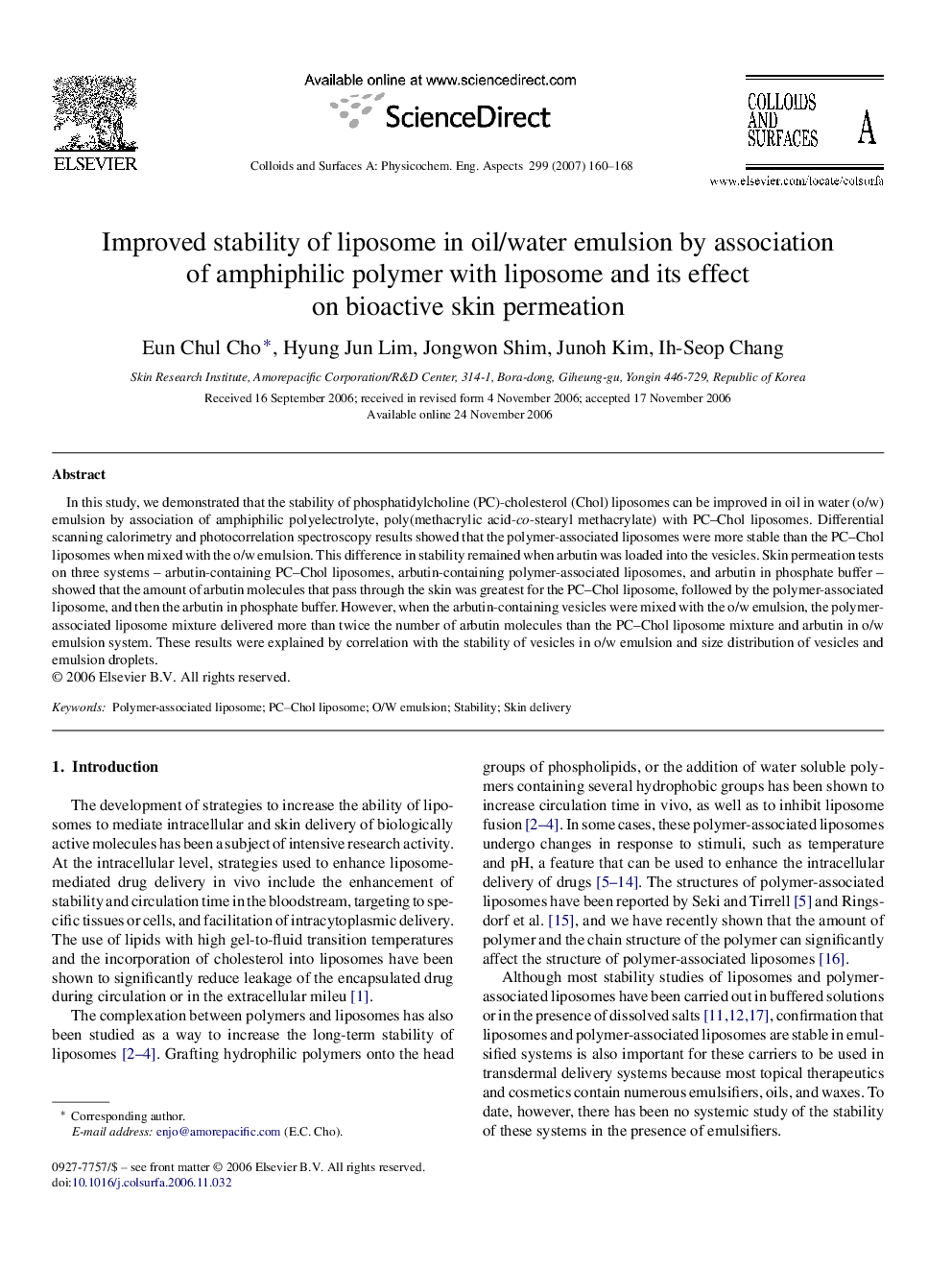| Article ID | Journal | Published Year | Pages | File Type |
|---|---|---|---|---|
| 597679 | Colloids and Surfaces A: Physicochemical and Engineering Aspects | 2007 | 9 Pages |
In this study, we demonstrated that the stability of phosphatidylcholine (PC)-cholesterol (Chol) liposomes can be improved in oil in water (o/w) emulsion by association of amphiphilic polyelectrolyte, poly(methacrylic acid-co-stearyl methacrylate) with PC–Chol liposomes. Differential scanning calorimetry and photocorrelation spectroscopy results showed that the polymer-associated liposomes were more stable than the PC–Chol liposomes when mixed with the o/w emulsion. This difference in stability remained when arbutin was loaded into the vesicles. Skin permeation tests on three systems – arbutin-containing PC–Chol liposomes, arbutin-containing polymer-associated liposomes, and arbutin in phosphate buffer – showed that the amount of arbutin molecules that pass through the skin was greatest for the PC–Chol liposome, followed by the polymer-associated liposome, and then the arbutin in phosphate buffer. However, when the arbutin-containing vesicles were mixed with the o/w emulsion, the polymer-associated liposome mixture delivered more than twice the number of arbutin molecules than the PC–Chol liposome mixture and arbutin in o/w emulsion system. These results were explained by correlation with the stability of vesicles in o/w emulsion and size distribution of vesicles and emulsion droplets.
